The capital of Dutch Brazil
‘recife’ is the portuguese for ‘reef’, what you find just off Recife’s beaches, breaking the waves. And, with the reefs come sharks, meaning that though the water is pleasantly warm and the beaches pretty, there’s not too much swimming going on in the ‘Brazilian Venice’.
Depending on whom you ask and what yardstick you use, Recife is perhaps the third most important Urban area in Brazil. It also has the third longest subway system in the country, which doesn’t say too much, though it does, very conveniently, and easily, connect the airport to the city, which both Sao Paulo and Rio should take their cue from.
Once, Recife was the largest port in the Americas, and, playing an early important role in international trade, it houses a few ‘firsts’. Like the oldest synagogue in the Americas, as well as, so it is claimed, the first bridge in Latin America, built by the Dutch.
The Dutch influence in Brazil was short-lived, though actually founding Recife, as Mauritsstad, ‘city of Maurits’, this Maurits being a cousin of Prince Maurits, the seventh child of William of Orange (William the Silent), after taking nearby Olinda from the Portuguese in 1630, and in turn being kicked out in 1654.
There is little that remains of the Dutch presence in Brazil, which means that when a hint of Dutch colonial history pops up, it’s the more surprising. Meanwhile, Brazilians in Pernambuco, the state of which Recife is the capital, tend to have a saudade, a longing, for the short reign of the Dutch, believing that, if the Dutch had stayed, Brazil would now have been a Holland in the tropics, with efficient industries, excellent education, freedom of religion, and politics free of corruption. Conveniently forgetting that, though the Dutch left Brazil, they kept a foothold on the continent in Suriname until 1975, which isn’t quite a ‘Holland in the tropics’.
The Dutch retreat from Brazil was facilitated by Portuguese plantation owners who were unhappy with the way they were treated by the Dutch. But, the Dutch weren’t too salty about it, as the West Indies Company considered the venture in Brazil mostly a failure, anyway. Though, not a failed experiment, as the Dutch learned two things from their struggle in Brazil; they needed direct control of the sugar cane plantations, which they made sure they had once they controlled Suriname (after a roundabout route via first controlling New Amsterdam, New York), and cheap labor, that is, slave labor, which the Dutch started successfully meddling in, only after the troubles they encountered in Recife.
Ironically, before leaving Recife, the Dutch were mostly against slavery, on moral grounds. But, a Dutch religious text from around this time justified the use of slaves, the Dutch going so far that, after starting to import and deploy African slave labour on the sugarcane plantations in Suriname, slaves even had to work seven days a week, as they were considered heathen, meaning no day of rest needed to be mandated.
So, indeed, a more likely parallel of what would have become of Recife, if the Dutch had stayed, would have been a situation more similar to modern day Suriname.
One thing going for Suriname, though, is that, there, a lack of restriction on what religion you practice is evidenced by one street in downtown Paramaribo, where a church, mosque and synagogue are practically in each other’s backyard.
Yet, pockets of leftover Dutch influence remain in Recife. Some locals still have Dutch last names, a university is called ‘Nassau’, and when I visited a popular private museum on the outskirts of town, containing the largest collection of weapons in the Americas (what do you do when you’re too rich?), they also turned out to have a library, only allowing one visit per day, specialising in the history of Dutch Brazil. There, when the curator learned I was Dutch, she couldn’t stop talking about the history of the region and the research they had been doing over the past few decades, pulling out the stops and showing me a solid range of preserved historical documents in the process.
More dissatisfaction from the landowning class
This dissatisfaction targeted at the Dutch in the 1650s came again to a head nearly two centuries later. Then, the Portuguese royal family had run away from their country, afraid of Napoleon’s military conquest of the Iberian peninsula, and setting up the Portuguese imperial court in Rio de Janeiro.
Plantation owners in the south were close to the Royal family, benefiting essentially from the colonial equivalent of insider trading. But, in Recife, in the north, thousands of kilometres away, the elite were required to support the royals, without accruing much benefit. Then, when taxation kept rising, and military conscription kept growing, dissatisfaction triggered the Pernambuco revolt of 1817.
In part also a consequence of enlightened ideas coming out of France and the rise of the independence movements in the Americas, a republic was eventually declared, though abolishing slavery was considered too radical, the liberté, egalité and fraternité not extending to the whole population, but only such that Pernambuco would be free from the royal chains of the south, treated as equals on an international level, and, the elite, living as brothers.
Interestingly, the American consulate general in Recife, also the oldest American diplomatic post in the southern hemisphere, supported the revolt.
A fascinating addendum to the revolt was that an Argentine general had floated the idea with the Brits to free Napoleon from his exile, then to take him to Latin America, to there start a new Napoleonic empire, though the suppression of the Pernambuco revolt ended this idea prematurely.
(As a hilarious afterthought, a lock of Napoleon’s hair is on display at a museum in Rio de Janeiro.)
For a short while, the revolution included the states of Ceará and Paraíba, the flag of the revolt honouring the three states with a rainbow topped by three stars above a cross. The flag, today, remains, almost unchanged, with now only one star, as the flag of Pernambuco.
Briefly, though, the city government at the start of the revolution, considered hoisting the French flag. But, then, gathering the flag-making troupes, their own flag was designed and raised instead.
The French themselves, notwithstanding the recent French enlightenment and Pernambuco’s interest, had additional designs on destabilising Brazil. With control of modern day French Guyana, France was bordering Brazil, while the border itself, in the far north of the continent, was not clearly defined. There, in the state of Pará, the Cabanagem, an other independence movement, was supported by the French, and managed to get Pará to secede for five years, from 1835 to 1840, after first joining Brazil at independence in 1822.
A patchwork of control
If you look at a map of the northern edge of Latin America, and the north east of Brazil, you easily see the legacy of this colonial bickering; the states are small, commanding a short shore line with a deep but narrow Hinterland, indicating a past where competing powers were fighting for the natural resources of colonies endowed with vast natural wealth.
Not often realised, besides the three Guyanas in the north of Latin America (Guyana, formerly British Guyana, Suriname, formerly Dutch Guyana and French Guyana), Venezuela absorbed a Spanish Guyana, and Brazil absorbed a Portuguese Guyana, all neatly next to each other on the Caribbean shores.
And what about Recife today?
Recife is a pleasant mix of colonial architecture, similar to Rio‘s downtown or Salvador‘s Pelourinho, facing the sea, located on several islands. Though some of the old buildings are in good shape, there is also a clear dilapidated streak running through the city, while some of the squares are slowly being revived with trendy bars and cafes. Old Recife is one of three islands, the city nestled at the mouths of two rivers.
Lula’s government, who himself hails from Pernambuco, poured in sizeable amounts of money for development of the city and region.
One curious building in old Recife, which, in industrial times was taken over by factories and transportation hubs, is the Malakoff Tower, named after a tower on the Crimean peninsula, which gained fame after the Crimean war. Built for military purposes the tower was abandoned at the start of the republic but was recently renovated, now trying to be a cultural center and an observatory.
Pleasantly, like Sao Paulo, Recife has no outdoor billboards.
On isolation
Latin America tends to be relatively expensive to get to, whether coming from Europe or North America. While at the same time, many don’t realize the sheer size of the continent. But, The distance from Recife to Freetown, the capital of Sierra Leone, in Africa, is about the same as the distance from Freetown to Malaga, in the South of Spain. It’s also about the same as from Recife to Porto Alegre, in the south of Brazil, which in turn is also about as far from the southern tip of Latin America.
So, this makes Recife closer to Europe than to parts of Latin America.
One Reply to “The capital of Dutch Brazil”
Comments are closed.










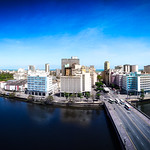





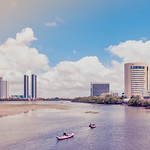
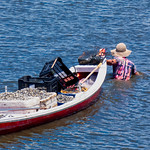

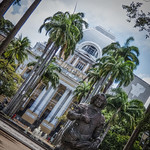








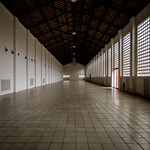
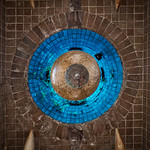
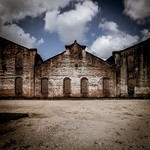











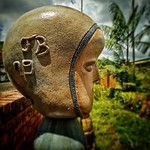
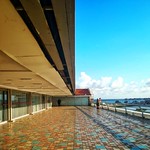














































[…] around Brazil, In Minas Gerais, Ouro Preto is one example. In the north, Olinda just north of Recife is awash in (Dutch) colonial history, but there are many more, including, of course, Rio de […]